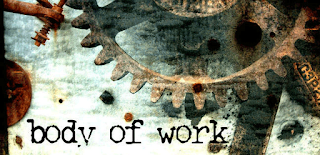I loved watching Pat Summitt coach. She stalked the sidelines with fire in her eyes and willed her players to victory. She x-rayed the game, made split second decisions and her fine-tuned teams adapted on the dime. Under her tutelage players grew as players and persons. She collected 6 national titles, but they only confirmed to me she embodied the basic truth that mind and will govern sports and achievement.
Players flocked to play for Summit not because she was easy or cuddly. She could be coldly demanding and spit fire and brimstone with a polite drawl. She trained for perfection and demanded a level of technical excellence and superb conditioning of each of her players. Her teams were not flashy or fancy. They played hard tenacious defense, rebounded better than anyone and played enough offense to “sell tickets” and win.
She imbued her players with this forceful intelligence and undaunted spirit, preparing them for “life” as much as sport. As she liked to say “don’t every say can’t to me” or in an all admonition to her players and herself, always “pay attention.”
She built her team on basics, execution and intensity, above all intensity that radiated from the coach through assistants to every player past and present. People knew what to expect when they played Summit’s Tennessee teams. The team simply did what they did better than anyone else. They beat you fair and square.
She had few rivals as an in-game coach. She could read the other teams’ and respond to defenses and match ups. Her vision comprehended the game, and her mind patterned and adapted on the fly. The training and preparation of her teams enabled them to execute and finish. Her mind and will infused them and her best teams were always finishers.
In another interview I remember her emphasizing how “to focus upon everything” when preparing and mastering the game. This played out in games where she demanded of herself and of her teams that they “bring the best every day.” If not, a player faced her famous baleful “the look.” One she modestly said was a “little intense” and helped to get “players to focus.” More to the point her son describes how that “stare of hers burn(s) a hole through your head.”
Her approach to coaching and players exemplified the old school theme but in modern feminist fugue, something she would probably vehemently deny. She exercised strong willed authority but not to the obsessive minute control of a Vivian Stringer.
These memories of her haunted me when I watched her coach late this season. She sat on the sidelines and watched the games. Clearly engaged but not with the almost feral penetration of the past. When she talked it was one on one; her long time assistants handled most of the huddles and most of the plays.
I have never been able to identify “fire in the eyes” although I understand the metaphor, but I could read her careful body language. It’s absurd to think of the word fragile and Pat Summit, but she carried herself more gingerly. The players paid attention to her but took their many cues from Holly Warlick and the Mickie DeMoss.
Pat Summitt is suffering from early-onset dementia Alzheimer’s type. The cruel disease steals a person’s mind and memory though the accretion of plaques in the brain that undermine neural communication. I watched it slowly befuddle and steal the energy, focus and memory of my grandfather. Last year at her announcement she could talk about forgetting some things and having trouble concentrating. He son spoke of simplifying house keeping mechanisms. Alzheimer’s is noted for sapping memory, but it steals concentration and focus. It diffused intensity that go with those. It confuses complex information processing so that persons can handle some information but get muddled much faster.
All the requirements of elite coaching and the strength of Summit’s greatness are being attacked by Alzheimer’s. She wants to continue coaching, and this year made arrangements to “assign staff responsibilities.” Her excellent and long-time assistants have always carried a lot of the load in practices. Now they do more, much more, and during the games, they handle most of the huddles. For someone with Alzheimer’s processing the massive inputs and pattern recognition required to manage a basketball game becomes harder and harder, let alone focusing and making quick decisions plus expending emotional energy to motivate and direct players.
It cannot continue because the essence of coaching of elite sports competition lies in the mind and focused will of the players and coach. It grows from the ability of the player and coaches’ to decipher patterns of a game and adapt to them on the fly while emanating emotional energy that keeps players focused and together during the ups and downs of a game. With luck and care, we will not have to watch her decline on national TV during games that she can no longer master.
Summit stood as a master of both mind and will. Her best teams demonstrated both. While she could rage with the best, she inspired loyalty and executed with virtuosity.
I can only admire her brilliance as a teacher and coach. How she channeled her intensity and intelligence into recruiting, coaching and playing an intense game. How success did not change her or quench her fire. Mellow would never describe her.
So watching Tennessee play the other day reminded me of why college sports involves mind and spirit. The erosion of either undermines athletics much more so than physical loss.
















